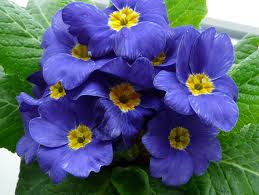Phoenix
Pot Cultivation
The best compost to use consists of three parts of loam, equal parts of leaf mold (or peat moss) and well-decayed manure, with coarse sand added freely. Repotting is done in March. The plants are taken out of their old pots and the loose soil and crocks should be removed from their roots. They are then placed in clean pots two sizes larger that are filled with crocks and compost that is patted firmly. After they have been repotted, they should be sprayed frequently and a humid atmosphere should be maintained by wetting the benches and floors quite often. The soil shouldn't be watered until it's fairly dry and then it should be soaked through. Repeat this method of watering until the roots have penetrated the new soil, after which the compost is kept moist throughout the summer. As fall approaches, the water supply can be decreased and during the winter, watering is only done when the soil becomes fairly dry. Less humidity is required in the winter but it shouldn't become too dry for a long time. Plants that are already growing in large pots or tubs can be kept growing actively by top-dressing them with rich compost in the spring and by watering them weekly with a dilute liquid fertilizer. The leaves of these plants should be sponged once in a while with insecticide to keep them clean and bug free.Propagation
Trees that are grown for the production of fruit are usually raised from suckers, otherwise they're grown from stones (seeds). First they are soaked in water that's room temperature for a couple days to soften them. Deep seed pans are used for planting them. They need to be well drained with crocks that are covered with rough leaves. The rest of the space is filled with a compost consisting of equal parts of finely sifted loam and coarse sand. They should be planted an inch apart and an inch deep. The soil should be watered well. Lay a pane of glass over the pan and place in a propagating case that has a bottom heat of 70-80 degrees. The seedlings will sprout slowly and when they are 2-3 inches tall, they should be potted in 3-inch pots and later, in larger pots. Seedlings of the common Date Palm can easily be grown by sowing seeds in pots on a windowsill or even in the open ground. P. roebelenii is propagated by offsets in the spring or summer. These are detached and inserted near the edges of small pots that are placed in a propagating case with bottom heat until they have a sufficient amount of roots. They are treated as advised above for seedlings. |
P. acaulis |
VARIETIES
- P. reclinata;
- P. roebelenii;
- P. rupicola;
- P. canariensis;
- P. acaulis;
- P. sylvestris;
- P. dactylifera, (Date Palm).




